Do you have a question about the Canon Vistura and is the answer not in the manual?
Expresses gratitude and sets expectations for the camcorder's features.
Initial steps and recommendations for learning camcorder operations.
Steps to connect the camcorder to a power source for operation.
How to use the write-protect tab on cassettes to prevent accidental deletion.
Guidelines for proper care, storage, and handling of video cassettes.
Information on the camcorder's cassette memory function.
Checklist of prerequisites before beginning the recording process.
Step-by-step instructions for initiating and conducting a recording.
How to toggle between the LCD screen and the viewfinder.
Adjusting the LCD screen for better viewing angles during shooting or playback.
Details on the LCD screen's precision and potential dot appearances.
How to use the LCD to monitor yourself or the subject during recording.
How to temporarily stop and resume playback of recorded video.
Instructions for quickly advancing through recorded content.
Instructions for quickly reversing through recorded content.
How to play back video frame by frame forwards or in reverse.
Instructions for playing recorded video at reduced speeds.
How to play recorded video at twice the normal speed.
Connecting the camcorder to a TV/VCR with an S-video input terminal.
Connecting the camcorder to a TV/VCR using standard A/V input jacks.
Advice on holding the camera steady for improved video quality.
Guidelines for mounting and using the camera on a tripod.
Principles of framing shots for more visually appealing video.
Choosing different shot types (long, medium, close-up) for storytelling.
Guidance on using pan and tilt movements for dynamic shots.
Explanation of the main camera settings accessible via the menu system.
Explanation of settings available when the camcorder is in VCR mode.
Accessing and using the video editing functions menu.
Accessing and configuring system settings via the set up menu.
How to correctly install batteries in the wireless controller.
Adjusting the camera's time zone and daylight saving settings.
How to set the current date and time on the camcorder.
Choosing how date and time information is displayed during playback.
Locating specific still pictures recorded on the tape.
Finding recorded segments based on the date they were captured.
Navigating through recorded footage to find specific points for editing.
Quickly reviewing the last few seconds of a recording to check quality.
How to choose from the camera's different recording modes.
Using the simplest point-and-shoot recording mode.
Using automatic settings for normal recording conditions.
Utilizing FlexiZone for flexible autofocus and exposure control.
Optimizing settings for recording fast-action sports scenes.
Enhancing subjects against softened backgrounds for portraits.
Recording subjects under focused lighting conditions.
Adjusting for bright backgrounds like beaches or ski resorts.
Capturing video in dimly lit environments.
Creating gradual fades into and out of scenes.
Transitioning scenes with a wiping motion.
Displaying images moving sideways into or out of the screen.
Applying artistic effects like solarization to the image.
Recording video in monochrome.
Recording images with a sepia tint.
Creating a series of still images for a slow-motion effect.
How to choose and activate various digital effects.
Choosing between high-quality 16-bit and multi-channel 12-bit audio recording.
Connecting audio devices for monitoring and improved recording.
Information on charging the Speedlite and its operation with the camera.
Using FlexiZone AF to select subjects for autofocus.
Freezing the focus at a specific point, disabling autofocus.
Directly adjusting the camera's focus using the focus wheel.
Using FlexiZone AE to base exposure on a selected area.
Fixing the exposure level to maintain brightness in changing light.
Fine-tuning exposure manually after locking it.
Steps to connect camera and VCR for automated video editing.
Marking start and end points of desired scenes from the original tape.
Reviewing the edited sequence and rearranging scenes.
Executing the auto editing process to create the final video.
Establishing the physical connection between the camcorder and VCR.
Configuring the camera for remote VCR operation.
Configuring the camcorder to send correct remote signals to the VCR.
Reviewing the programmed editing sequence before final recording.
Adjusting cut-in/cut-out points to compensate for VCR response times.
Erasing all programmed scenes and resetting the editing program.
Removing specific scenes from the editing program.
Steps to connect and prepare the camera and VCR for basic editing.
Step-by-step guide for manually copying scenes to the VCR.
Using the DK-1 kit to transfer still pictures to a computer.
Information on playback and dubbing restrictions for protected tapes.
Customizing the viewfinder for optimal viewing comfort.
Procedures for preparing the lens cap and securing the grip belt.
How to attach and adjust the shoulder strap for portability.
Expected times for battery recharge and recording duration.
Understanding the battery indicator and low power warnings.
Guidelines for when and how to recharge the lithium-ion battery.
Instructions for attaching terminal covers and keeping terminals clean.
Proper procedures for storing battery packs for extended periods.
Replacing the internal backup battery for date/time memory.
Warnings regarding temperature, humidity, light sources, and magnetic fields.
Recommendations for storing the camera when not in use.
Modifying the LCD screen's brightness level.
Methods for cleaning the viewfinder and LCD screen.
Proper techniques for cleaning the camera exterior and lens.
Instructions for cleaning the video heads to resolve playback issues.
Using the camera with different international power supplies.
Information on TV systems compatible with the camcorder's playback.
Steps to take before entering warm/humid environments to prevent moisture buildup.
What to do when condensation is detected and how to resolve it.
Solutions for issues encountered during recording or playback, such as no power, display errors, or focus problems.
Solutions for issues with accessories, indicators, camera malfunctions, and cable connections.
Details on battery packs, car adapters, charge adapters, and filter rings.
Tele-converters, wide-converters, filter sets, and video lights for enhanced shooting.
Microphone booms, chargers, carrying cases, RF adapters, and RF units.
External flash units and the kit for transferring still pictures to a computer.
Identifies external buttons, terminals, and key camcorder components.
Diagram and explanation of the wireless remote control buttons and functions.
How to disable the LCD screen's information displays for cleaner playback.
Explanation of symbols and messages displayed on the camcorder screen, including effects and modes.
Understanding time code recording and recording start reminders.
Interpretation of various caution messages shown on the camera display.
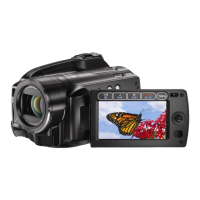
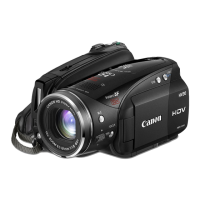
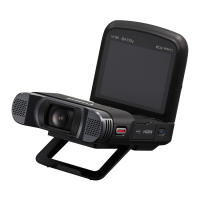

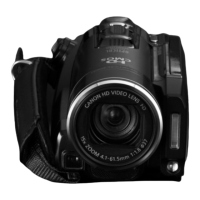
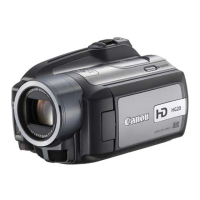
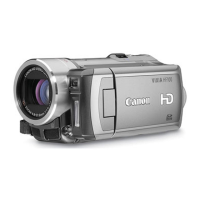
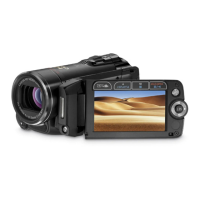
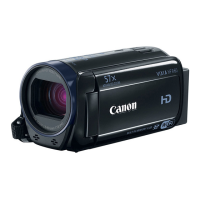
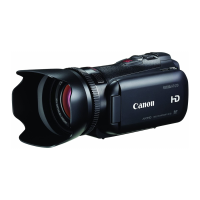

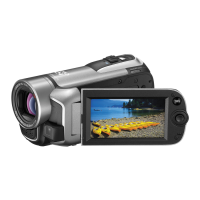
